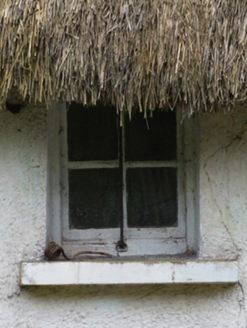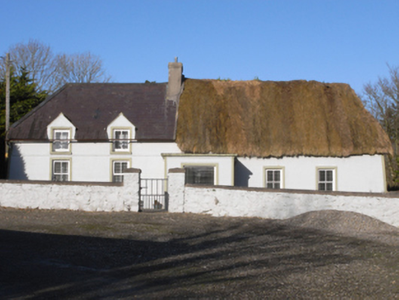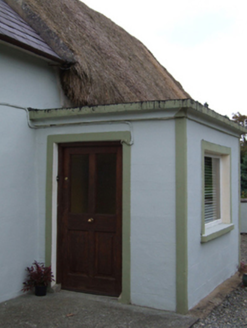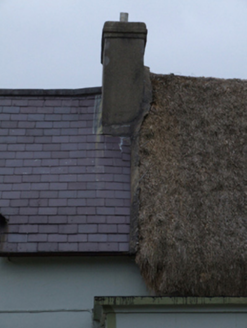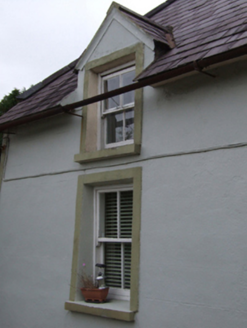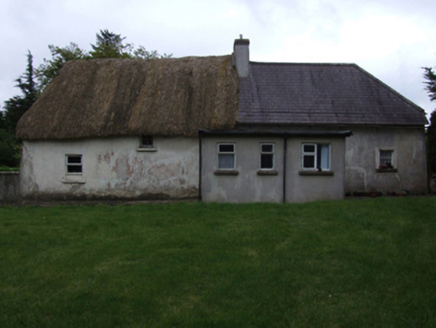Survey Data
Reg No
15703251
Rating
Regional
Categories of Special Interest
Architectural, Social
Original Use
Farm house
In Use As
Farm house
Date
1700 - 1840
Coordinates
303242, 131849
Date Recorded
29/09/2007
Date Updated
--/--/--
Description
Detached five-bay single-storey lobby entry thatched farmhouse with dormer attic, extant 1840, on a T-shaped plan centred on single-bay single-storey flat-roofed projecting porch. "Improved", pre-1903, producing present composition. Hipped slate roof (west) including gablets to window openings to dormer attic with clay ridge tiles, rendered coping with rendered chimney stack to apex having corbelled stepped chamfered capping, and cast-iron rainwater goods on rendered eaves retaining cast-iron downpipes; hipped oat thatch roof (east) with exposed wire stretchers to degraded ridge having exposed scallops, and blind stretchers to eaves having blind scallops. Rendered, ruled and lined battered walls with rendered "bas-relief" strips to corners; rendered surface finish to rear (north) elevation. Central door opening into farmhouse. Square-headed window openings with concrete sills, and rendered "bas-relief" surrounds framing two-over-two timber sash windows having part exposed sash boxes. Set back from road in courtyard with piers to "cottage garden" having precast concrete caping supporring flat iron gate.
Appraisal
A farmhouse identified as an integral component of the vernacular heritage of County Wexford by such attributes as the rectilinear lobby entry plan form centred on an expressed, albeit later porch; the construction in unrefined local materials displaying a battered silhouette with sections of "daub" or mud suggested by an entry in the "House and Building Return" Form of the National Census (NA 1901; NA 1911); the disproportionate bias of solid to void in the massing; and the high pitched roof showing a degraded oat thatch finish: meanwhile, aspects of the composition, in particular the "permanent" slate finish, clearly illustrate the continued development or "improvement" of the farmhouse in the later nineteenth century (cf. 15612023; 15703246; 15704133). Having been well maintained, the elementary form and massing survive intact together with substantial quantities of the historic or original fabric, thus upholding the character or integrity of the composition. Furthemore, adjacent "tin roofed" outbuildings (extant 1840) continue to contribute positively to the group and setting values of a self-contained ensemble making a pleasing visual statement in a sylvan street scene.
